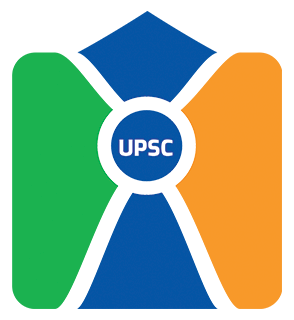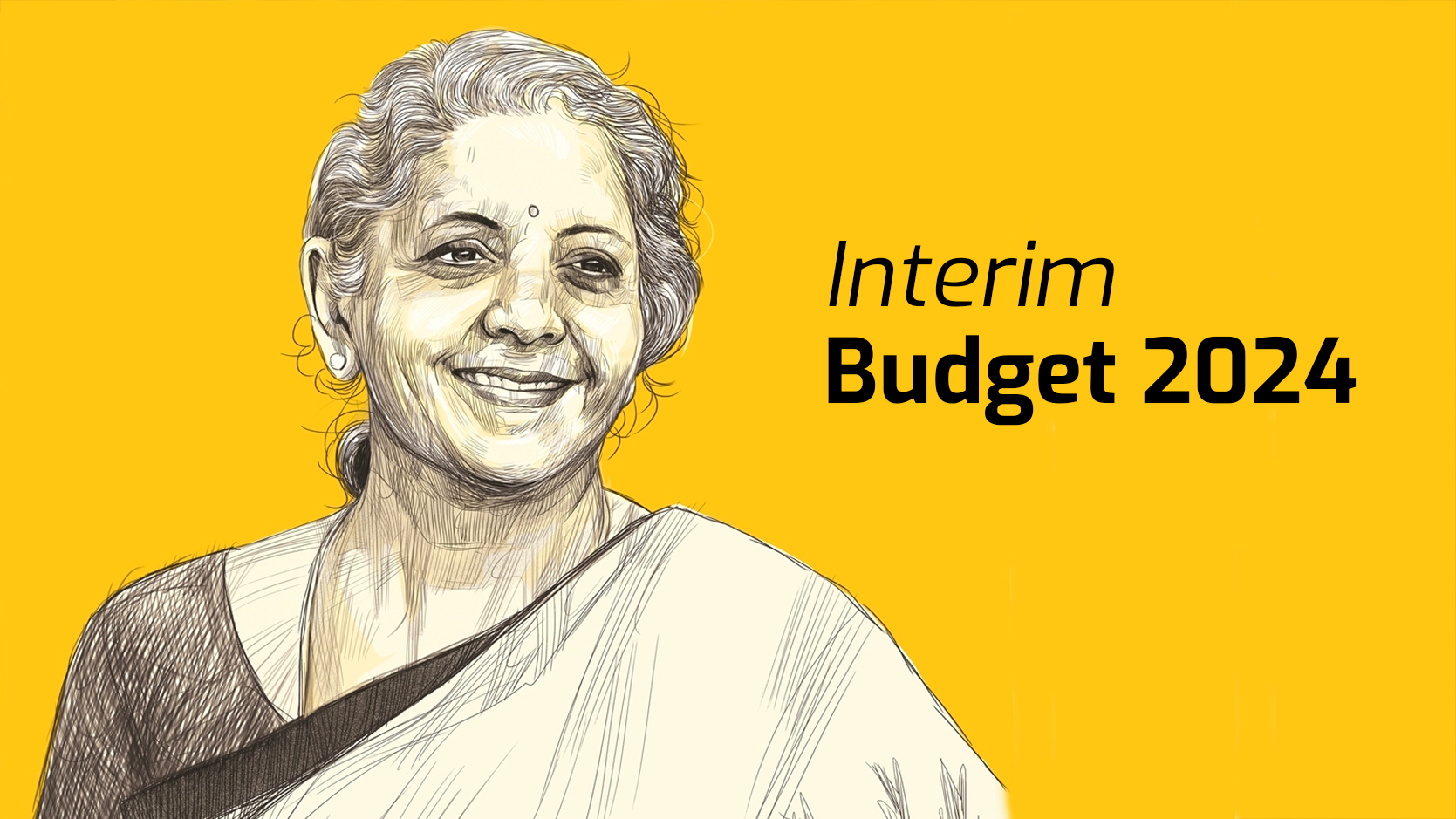How a Nearby River Contributes to the Rise of Mt Everest, According to New Study
Why in News?
The loss of landmass in the Arun River basin, which spreads across Nepal and Tibet and is 75 km away from Everest, is causing the world’s tallest peak to rise by up to 2 mm a year, the study said.
Mount Everest and Its Rising Height
- Mount Everest is currently 8,849 metres tall. Over the past 89,000 years, it has grown by 15 to 50 m higher than expected, primarily due to erosion from a nearby river.
- Arun River Basin: The basin, located 75 km from Everest, plays a critical role in the uplift of Everest by causing erosion of rock and soil at its base.
Arun River
- It is a trans-boundary river that is part of the Koshi or Sapta Koshi river system.
- Location: Nepal
- Origin: Tibet Autonomous Region of the People’s Republic of China where it is called the Phung Chu or Bum-chu.
What is a River Basin?
A river basin is land drained by a river and tributaries, including surface water and groundwater.
Processes Affecting Everest’s Height
- Isostatic Rebound: A geological process where the Earth’s crust rises when surface weight, such as eroded rock or ice, is reduced. This is a significant factor in Everest’s rise, accounting for around 10% of its annual uplift rate.
- Tectonic Plate Collision: The Himalayas, including Everest, have been rising due to the collision between the Indian and Eurasian tectonic plates for around 50 million years.
What is a Tectonic Plate?
Tectonic Plates are large, rigid pieces of the Earth’s lithosphere (the outermost shell) that fit together like a jigsaw puzzle, covering the Earth’s surface.
- Key Features:
- Composition: Made of the crust and the uppermost part of the mantle.
- There are two main types:
- Continental Plates: Thicker and less dense, comprising landmasses.
- Oceanic Plates: Thinner and denser, forming the ocean floors.
- Movement: Tectonic plates move due to convection currents in the mantle, leading to various geological activities.
Boundaries:
- Convergent: Plates move towards each other, causing subduction or mountain formation.
- Divergent: Plates move apart, leading to the formation of new crust (e.g., mid-ocean ridges).
- Transform Boundaries: Plates slide past each other, causing earthquakes (e.g., San Andreas Fault).
Importance:
- Responsible for earthquakes, volcanic eruptions, and the formation of mountains.
- Influences climate, geography, and natural resources distribution.
Way Forward
Further research confirms findings on river systems’ influence on mountain formation and topography.
10 Years of Swachh Bharat Mission: Its Aims and Status on Key Targets
Why in News?
SBM’s focus areas were building individual toilets, community toilets, solid waste management, and leading awareness campaigns aimed at behavioural changes.
Swachh Bharat Mission (SBM) Overview
- Launched: October 2, 2014, as a tribute to Mahatma Gandhi.
- Divided into:
- SBM-Gramin: Focused on rural areas.
- SBM-Urban: Focused on urban cities.
- Executed by: Ministry of Drinking Water and Sanitation and the Ministry of Housing and Urban Affairs.
Key Focus Areas
- Individual Toilets: Construction of household toilets.
- Community Toilets: Development of cluster toilets for communities.
- Solid Waste Management: Strategies for managing waste efficiently.
- Awareness Campaigns: Initiatives to promote behavioral changes regarding sanitation.
Targets of SBM
- Open Defecation-Free (ODF): Aim to eliminate open defecation by constructing household and community toilets.
- Budget Allocation: Increased from Rs 10,000 (Nirmal Bharat Abhiyan) to Rs 12,000 per toilet under SBM.
Achievements So Far
- Toilets Constructed: Over 10 crore toilets.
- ODF Status Declared: 6 lakh villages ODF by October 2, 2019.
- Funding: The Centre released Rs 57,469.22 crore for SBM-Gramin between 2014-2019.
Current Statistics
- 5.54 lakh villages and 3,913 cities declared ODF+.
- 97% of municipal wards have door-to-door waste collection.
Impact of the Mission
- Health Benefits: Estimated to prevent 3 lakh deaths from diarrhoea and malnutrition.
- Infant Mortality Reduction: A study links SBM to a decrease in annual infant deaths by 60,000 to 70,000 between 2014 and 2020.
Important Terms and Definitions
- Open Defecation-Free (ODF): A status achieved when no one defecates in the open within a defined area, ensuring the presence of adequate toilet facilities.
- Solid Waste Management: The process of collecting, treating, and disposing of solid waste materials to reduce their impact on the environment and public health.
- Community Toilets: Shared toilet facilities for a group of households, especially in densely populated areas where individual toilets may not be feasible.
- ODF+: A designation for areas that not only meet the ODF criteria but also have systems in place for liquid waste management.
- Swachh Bharat Mission (SBM): A national campaign launched to promote sanitation, hygiene, and waste management across India.
Who is an Overseas Citizen of India? What are the Rights and Privileges of OCI Card Holders?
Why in News?
The Consulate General of India in New York has clarified that recent rumors claiming OCI card holders are being reclassified as “foreigners” are false. The Ministry of External Affairs reiterated that the existing rules for OCI card holders remain unchanged.
Overview of OCI
- Definition: The Overseas Citizen of India (OCI) scheme allows Persons of Indian Origin (PIOs) to hold an OCI card, enabling them to enjoy certain privileges in India while holding a foreign passport.
- Introduced: August 2005.
- Purpose: To provide dual citizenship rights for the Indian diaspora.
Rights and Privileges of OCI Card Holders
- Visa: OCI card holders receive a lifelong, multiple-entry visa for visiting India.
- Registration Exemption: They are exempt from registering with local police for any length of stay.
- Total Holders: As of 2023, over 4.5 million registered OCI card holders exist across 129 countries, with the largest populations in the US, UK, Australia, and Canada.
Latest Rules Regarding OCIs
- Permit Requirement: As per a 2021 gazette notification, OCIs need permission to visit protected areas and undertake research or journalistic activities in India.
- Economic Parity: The notification aligned OCI card holders with “foreign nationals” regarding economic, financial, and educational rights under the Foreign Exchange Management Act (FEMA).
Who Cannot Be an OCI?
- Individuals with Pakistani or Bangladeshi citizenship in their family background are not eligible.
- Foreign military personnel are also excluded.
Restrictions on OCI Card Holders
- Voting Rights: OCIs cannot vote or hold certain government positions.
- Employment: They cannot hold employment in the government sector.
Key Terms
- Overseas Citizen of India (OCI): A status granted to Persons of Indian Origin, allowing them to live and work in India without a visa.
- Person of Indian Origin (PIO): Any foreign citizen with Indian ancestry who may have held Indian citizenship.
- Foreign Exchange Management Act (FEMA): An Indian law to facilitate external trade and payments and to promote the orderly development and maintenance of the foreign exchange market in India.
Way Forward
Continuous monitoring and clarifications regarding OCI rules are essential to prevent misinformation and ensure the rights of OCI card holders are upheld.
What Special Status is Ladakh Seeking? | Explained
What in News?
Climate activist Sonam Wangchuk was detained while protesting for Ladakh’s inclusion in the Sixth Schedule, echoing similar demands in Arunachal Pradesh and Manipur for ethnic safeguards.
Asymmetrical Federalism in India
The system where certain states or regions have more autonomy than others, in contrast to symmetrical federations like the U.S. or Australia, where all states have the same powers.
Fifth and Sixth Schedules – Historical Context
- Colonial Era Roots: The British created ‘excluded’ and ‘partially excluded’ areas under the Government of India Act, 1935, to deal with tribal populations, which had been historically independent.
- Partially Excluded Areas: Bihar, Bengal, Orissa, and other states.
Fifth Schedule
- Applicable Areas: ‘Scheduled areas’ in 10 states, declared by the President, based on tribal population, compactness of the area, and economic backwardness.
- Governance: Tribes Advisory Councils (TAC) are set up, advising on welfare, and the Governor can regulate land transfers and business activities.
- Executive Control: Governors have the power to make regulations, subject to Central government approval.
Sixth Schedule
- Applicable Areas: ‘Tribal areas’ in Assam, Meghalaya, Mizoram, and Tripura, with 10 such tribal areas currently in place.
- Autonomous District Councils (ADCs): Significant powers to make laws on land management, customs, marriage, and social issues, subject to Governor approval.
- Additional Powers: Manage primary education, health facilities, impose taxes, and control land revenue, offering greater autonomy than Fifth Schedule areas.
Ladakh’s Demand for Sixth Schedule Status
- Why Ladakh Seeks Inclusion?: To protect the culture, land, and economic interests of the region’s tribal communities.
- Current Status: Since 2019, does not enjoy the same autonomy as the Sixth Schedule areas, which is why activists like Sonam Wangchuk are pushing.
Special Provisions for Northeastern States
- Articles 371A-H: Specific protections for Nagaland, Assam, Manipur, Sikkim, Mizoram, and Arunachal Pradesh, including respect for local laws and customs and special administrative provisions.
Further Reforms and Issues
- Expansion of Scheduled Areas: Many tribal areas are yet to be notified as ‘scheduled areas’, leaving them without constitutional protections.
- 125th Constitutional Amendment: Aims to grant more powers to ADCs, but its passage is pending.
- Growing Demands: Ladakh, Arunachal Pradesh, and Manipur have passed resolutions demanding inclusion in the Sixth Schedule.
Way Forward
To support Ladakh’s Sixth Schedule demand, amend the Constitution, engage in dialogue, extend Article 371, establish ADCs, and ensure legal safeguards.
PM Launches Package for Scheme Saturation in Tribal-Majority Villages
What in News?
On October 2, 2024, the launch of the Dharti Aaba Janjatiya Gram Utkarsh Abhiyan took place to provide essential services in tribal-majority villages, honoring tribal leader Birsa Munda.
Overview of Tribal Development Initiatives in India
Tribal development initiatives are government programs designed to uplift and empower Scheduled Tribes (STs) through various socio-economic measures, infrastructure development, and access to essential services. India’s approach to tribal development involves multiple schemes and constitutional provisions aimed at ensuring the welfare and empowerment of tribal communities.
Dharti Aaba Janjatiya Gram Utkarsh Abhiyan
- Objectives of the Package: To enhance the socio-economic status of tribal communities by saturating villages with essential services and schemes.
Key Features of the Package:
- Funding: Total outlay of ₹79,156 crore over five years; Central share of ₹56,333 crore.
- Tourism Development: Up to ₹5 lakh for tribal families to create homestays.
- Infrastructure Goals: Build 20 lakh pucca homes, connect 25,000 km of roads, and ensure piped water access to remote hamlets.
- Electrification: Targeting 2.35 lakh households and providing 25 lakh LPG connections.
- Digital Connectivity: Broadband for 5,000 tribal villages and setting up 100 multi-purpose marketing centres.
Special Provisions for Tribal Welfare
The package reinforces the government’s dedication to tribal welfare and development, as evidenced by previous initiatives like the PM-JANMAN package.
Key Terms
- Dharti Aaba: A reference to Birsa Munda, symbolizing tribal identity and heritage.
- Scheduled Areas: Regions identified under the Fifth Schedule with special protections.
- Autonomous District Councils (ADCs): Local bodies in Sixth Schedule areas with legislative powers.
PM Modi Says India Trusted Partner in Jamaica’s Development Journey
What in News?
India has been a “trusted partner” in Jamaica’s development journey, ready to share expertise in areas such as digital public infrastructure, biofuel, innovation, and health, says Indian PM.
India-Jamaica Relationship
The bilateral relationship between India and Jamaica is strong, deeply rooted in historical and cultural ties. The Indian diaspora, which arrived in Jamaica 180 years ago as indentured laborers, plays a significant role in people-to-people connections.
What is Indian Diaspora?
The population of Indian-origin people who live outside India, either as expatriates, citizens of other countries, or descendants of earlier emigrants.
Key Aspects of the Indian Diaspora
- Size and Global Presence: The Indian diaspora is one of the largest in the world, contributing significantly to the economies of their host countries.
- Migration Waves: Various waves of migration, including those during colonial times and economic opportunities in the post-independence era.
- Economic Impact: The diaspora contributes to global economies through remittances, investments, and entrepreneurship.
- Cultural Influence: Indian culture, festivals, and cuisine have enriched the cultural tapestry of countries where the diaspora resides.
- Political and Diplomatic Influence: The Indian diaspora plays a vital role in fostering diplomatic relations between India and host nations.
Key Areas of Cooperation in India-Jamaica
- Digital Public Infrastructure: Jamaica looks to India’s progress in digitization, seeking to strengthen its capabilities in the digital sphere.
- STEM Education: Jamaica’s interest in improving STEM education with India’s assistance was emphasized by PM Holness.
- Energy and Biofuel: Collaborative efforts in energy security and biofuel development are set to expand, benefiting both nations.
- Health: Health sector partnerships were underscored, with India poised to share innovations.
What is STEM Education?
STEM Education refers to the integrated teaching of Science, Technology, Engineering, and Mathematics, focusing on real-world applications and problem-solving. It promotes interdisciplinary learning, encourages critical thinking, and involves project-based activities.
Defence and Security:
Challenges like organized crime, drug trafficking, and terrorism will see both nations cooperating in defense training and capacity building for Jamaica’s armed forces.
Cultural and People-to-People Ties:
The road in front of the Jamaica High Commission in New Delhi has been named “Jamaica Marg” in honor of the strong ties between the two nations.
Way Forward
Engaging the Indian diaspora requires diplomacy, economic opportunities, political inclusion, cultural exchange, and tackling challenges to strengthen India’s global influence and economic growth.
Explained: The Significance of India’s Mission to Develop Supercomputers
What in News?
On September 26, 2024, the inauguration of three PARAM Rudra supercomputers marked a significant step in India’s National Supercomputing Mission (NSM). This initiative aims to enhance the country’s scientific capabilities through advanced computational resources.
Supercomputers
High-capacity computing systems designed for complex computations in various fields such as quantum mechanics, climate research, and big data analytics. These machines are essential for tasks that require extensive processing power, which regular computers cannot handle efficiently.
National Supercomputing Mission (NSM)
Launched in 2015 with a budget of ₹4,500 crore, NSM aims to develop a grid of 70 supercomputers across research institutions and universities in India. The initiative is jointly managed by the Department of Science and Technology (DST) and the Ministry of Electronics and Information Technology (MeitY).
Recent Developments
The newly inaugurated supercomputers (PARAM Rudra) are located in Pune, Delhi, and Kolkata, focusing on high-performance computing (HPC) for weather and climate research. Since the launch of NSM, over 20 supercomputers have been deployed nationwide, significantly boosting India’s computational capacity.
Applications of Supercomputers
- Climate modeling
- Weather forecasting
- Aerospace engineering
- Molecular dynamics
- National security
Supercomputers also support research in computational biology, energy, and medical research.
Historical Significance
India’s drive to develop indigenous supercomputing technology stems from past experiences of technology denial by Western nations, notably in the 1970s and 1990s.
Achievements
Between 2019 and 2023, NSM successfully commissioned a total capacity of 24.83 petaFLOPS in HPC machines. The mission has trained 1.75 lakh personnel in high-performance computing and facilitated over 73.25 lakh computational queries.
Way Forward
The National Supercomputing Mission signifies a pivotal advancement in India’s scientific research capabilities. By developing indigenous supercomputing technologies, India not only enhances its research capacity but also strengthens its position in the global scientific community.
Explained: The Significance of India’s Mission to Develop Supercomputers
What in News?
On September 26, 2024, the inauguration of three PARAM Rudra supercomputers marked a significant step in India’s National Supercomputing Mission (NSM). This initiative aims to enhance the country’s scientific capabilities through advanced computational resources.
Supercomputers
Supercomputers are high-capacity computing systems designed for complex computations in various fields such as quantum mechanics, climate research, and big data analytics. These machines are essential for tasks that require extensive processing power, which regular computers cannot handle efficiently.
National Supercomputing Mission (NSM)
Launched in 2015 with a budget of ₹4,500 crore, the NSM aims to develop a grid of 70 supercomputers across research institutions and universities in India. The initiative is jointly managed by the Department of Science and Technology (DST) and the Ministry of Electronics and Information Technology (MeitY).
Recent Developments
The newly inaugurated supercomputers (PARAM Rudra) are located in Pune, Delhi, and Kolkata, focusing on high-performance computing (HPC) for weather and climate research. Since the launch of NSM, over 20 supercomputers have been deployed nationwide, significantly boosting India’s computational capacity.
Applications of Supercomputers
- Climate modeling
- Weather forecasting
- Aerospace engineering
- Molecular dynamics
- National security
These supercomputers also support research in computational biology, energy, and medical research.
Historical Significance
India’s drive to develop indigenous supercomputing technology stems from past experiences of technology denial by Western nations, notably in the 1970s and 1990s.
Achievements
Between 2019 and 2023, the NSM successfully commissioned a total capacity of 24.83 petaFLOPS in HPC machines. The mission has trained 1.75 lakh personnel in high-performance computing and facilitated over 73.25 lakh computational queries.
Way Forward
The National Supercomputing Mission signifies a pivotal advancement in India’s scientific research capabilities. By developing indigenous supercomputing technologies, India not only enhances its research capacity but also strengthens its position in the global scientific community.
Centre Reconstitutes Monetary Policy Committee Ahead of RBI Rate Review
What in News?
The central government has reconstituted the Monetary Policy Committee (MPC) ahead of the upcoming RBI monetary policy review. The committee now includes three new external members who will serve for four years.
Monetary Policy Committee (MPC)
The MPC is responsible for fixing the benchmark interest rate, also known as the repo rate, which influences other interest rates in the economy. The primary goal of the MPC is to maintain price stability while supporting economic growth.
What is Repo Rate?
The repo rate is the rate at which the Reserve Bank of India (RBI) lends money to commercial banks when there is a shortfall of funds. It is used as a tool to control inflation.
Key Responsibilities of the MPC
- Inflation Targeting: Under the flexible inflation targeting regime, the RBI aims to maintain the Consumer Price Index (CPI) within a 2-6% range.
- Price Stability: The primary goal is to ensure price stability, which is a prerequisite for sustainable economic growth.
- Policy Formulation: The MPC assesses the current and evolving macroeconomic situation to determine the appropriate repo rate and liquidity conditions.
Recent Developments
The reconstitution of the MPC will influence future monetary policy decisions, especially as inflation concerns remain high. In the August 2024 monetary policy meeting, the MPC, with a 4:2 majority, kept the repo rate unchanged at 6.5%, citing inflation risks, particularly from high food prices.
What is Inflation Targeting?
Inflation targeting is a monetary policy strategy used by central banks to control inflation by setting a specific target for inflation levels. The RBI aims to keep CPI inflation within the 2-6% range, with a long-term target of 4%.
Way Forward
The reconstitution of the MPC ahead of the October 7-9 monetary policy review is significant as it may shape the future course of India’s monetary policy. Inflation control and economic growth remain central to the MPC’s objectives, with the repo rate expected to stay at 6.5%.
Array




